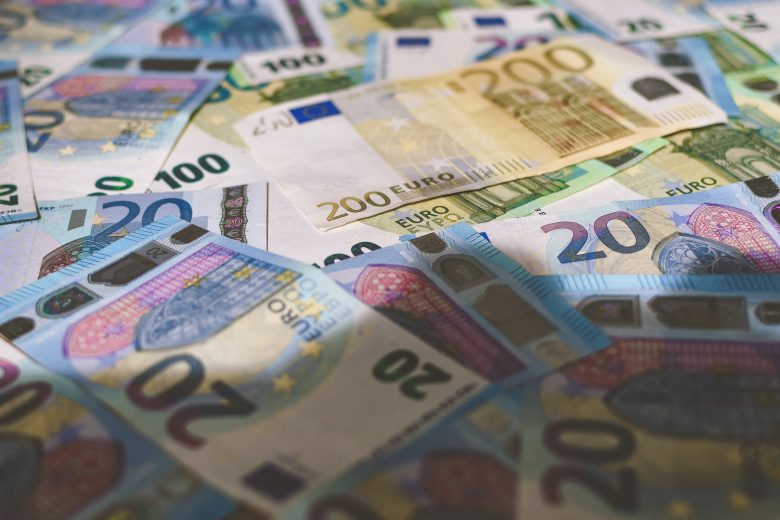Europe’s e-commerce faces a hot July as new VAT rules take effect

Congrats! Or rather where do we go now? Starting from July 1st, e-commerce with and within the EU is subject of new rules aimed at facilitating deals between players in the industry, while lowering pressure on third parties. The opportunities and the challenges facing European e-merchants and their third-party counterparts, however, lie in the details.
Simplified e-commerce within the EU

Starting from July 1st, all sellers involved in cross-border B2C deals, including online, will be able to register their business in one EU member state, and this registration will be valid for VAT declarations and payment for all remote cross-border sales and deliveries of products and services for clients within the EU. The move is expected to reduce red tape by up to 95% with the introduction of a new One Stop Shop/OSS registration mechanism. A special Import One Stop Shop/IOOS mechanism is aimed to simplify the declaration and payment of VAT.
A new, simplified mechanism is also introduced for online delivered goods worth under EUR 150, where the IOOS mechanism is not used. For end users shopping online in the EU or from countries outside the EU, the VAT rate is now the same as for goods purchased in their home country.
Challenges ahead

Experts believe that the new regulations would help bring e-commerce within the EU out of the shadowy economy realm and would facilitate and increase the number of deals, while improving VAT collection rates for e-commerce within and with the EU. However, Aleksandra Bal, Indirect Tax Technology & Operations Lead at Stripe, warns that: “While the general objectives and principles of the e-commerce VAT package seem to be well understood, “the devil is in the details” and these details will ultimately determine whether a business is compliant or not.”
Elaborating on the new regulations, she stressed that “the foundations of the e-commerce VAT package – the three One-Stop Shop (OSS) schemes: the Union scheme, the non-Union scheme and the import (IOSS) scheme are optional. Although they seek to simplify compliance, there also good reasons not to use them. As you cannot deduct input VAT in your OSS return, businesses incurring significant expenses in other countries may prefer local registrations over an OSS scheme.”
Measures will ease some of the administrative burden for e-commerce operators, particularly those that are mainly active within the EU. Still, there are risks involved, which are hidden in the national interpretations of the regulations and the national laws. Theodor Artenie (Head of Tax) & Carmen Mazilu (Senior Tax Adviser) from Romanian consultancy Noerr said in an article published by Business-review.eu that disputes between sellers and national tax authorities will be resolved based on the experience gained after the initial implementation of the secondary legislation. As an example, they cited the following possible situations: exchange rate differences arising in relation to VAT amounts collected in different currencies, automation of VAT returns required by the new tax rules, application of the correct VAT rates in force in the Member States where merchants will be selling their products, monitoring the tax legislation of the Member States concerned to catch relevant changes in time, etc.
Global race

According to Nikola Ilchev, founder of eCommerce Academy Bulgaria, despite the initial concern about the new EU-wide measures, these changes will have positive impact on commerce within the EU as a whole. Every e-merchant will be able to take much bolder steps into neighboring markets and increase their sales.
“On one hand, there will be less competition from websites outside the EU (mostly Chinese), where goods are much cheaper based on the absence of VAT and other taxes. When such products are imported, all taxes will be payable by the end client. Thus, the end client will no longer have any benefit from ordering goods from China that can be bought at approximately the same price from a local supplier. At the same time, it will be harder for sellers and platforms from non-EU countries to avoid paying these taxes and keep their prices low,” Ilchev told Trending Topics SEE.
This is a “trunk” in the hands of Europe in its global e-commerce race, where it is still lagging behind China, the US, and India. According to data published by TradingPlatforms.com in April 2021, China and the US, the biggest e-commerce markets globally, are expected to generate revenues worth EUR 2.8trn from this industry. In Europe, the new measures will accelerate the growth rates in the internal e-market, which was valued at about EUR 146b in 2010, up 35% from 2019. The cross-border share represents 25.5 % of total online sales in Europe, according to stats published in the report Cross-border Ecommerce in Europe (2020).
Therefore, Ecommerce Europe, an organization representing more than 25,000 companies selling goods and/or services online, supports the new regulations aimed to facilitate internal trade within the EU, describing it as a fundamental and concrete simplification of the overall complex VAT system for businesses.
A move against the shadow economy

The new regulations will improve the business environment and will help online sellers in Bulgaria and the SEE region improve their performance, according to Nikola Ilchev, who pointed out players in the region are still lagging behind the most advanced e-commerce markets such as France, Germany, and the UK (now no longer part of the EU). However, according to the Europe 2020: Ecommerce Region Report, Bulgaria and Romania posted a 30% increase in the number of online buyers in 2020 despite their (still) relatively small share of 29 and 31% respectively.
“The grey sale of goods, imported without paying any taxes, will stop. They compete directly with companies that pay VAT, customs duties, and profit taxes. For the past several years, we have witnessed many businesses suffering from poor sales because marketplaces offer many products similar to the ones they sell at drastically lower prices. Nevertheless, I know producers and distributors of cosmetics, food products, drinks, sports good and shoes that are still doing great. One factor behind their success is that big platforms have made it so much easier for online sellers to use more than one market. We should also note the contribution of shipping companies,” the expert explained.
The UK – in or out?

A year and a half after the UK left the ranks of the EU, its decision is still causing serious shocks in the e-commerce industry. According to a study by e-commerce platform Channel Advisor, 94% of British brands sold online have lost some of their customers in the EU since 2020. With the new VAT regulations, where the minimum threshold for exempting third-country products from VAT is being brought down to 22 euros, small sellers are facing an even tougher crisis.
Big platforms selling in the EU, however, have a chance to benefit from a simplified VAT reimbursement procedure, according to Aleksandra Bal. There is another “detail” that experts note: although the U.K. is no longer part of the EU, the EU VAT rules continue to apply to sales of goods between the EU and Northern Ireland. Northern Ireland has a dual VAT regime: it follows the EU VAT rules for the sales of goods but it is treated as a non-EU country for the sales of services. This means that sales of goods (but not services) to consumers in Northern Ireland may be declared via the OSS Union scheme.
What’s ahead?
In a press release published on July 1st, the European ecommerce association posed the question of international platforms maintaining storage and warehousing facilities in more than one country in a bid to be closer to their customers. They cannot take advantage of the new simplified VAT mechanism that would allow them to pay VAT in one European country. In this context, e-merchants still have to maintain their foreign VAT registrations in every EU country where they are sending or holding stock. In relation to the expected EC initiative of a single VAT ID in 2022/23, the association insists that: “ Having a simple VAT ID would extend the existing VAT OSS to all shipments of merchandise where the seller of record is not located in the EU country of taxation. Ecommerce Europe believes that this initiative should be tabled as soon as possible, and in any case no later than 2022, in order to complement the VAT OSS and enable businesses selling online to have a unique VAT ID and report all the VAT through the single digital VAT portal.“
You may also like: E-commerce ABC: what is it and how does it work




























